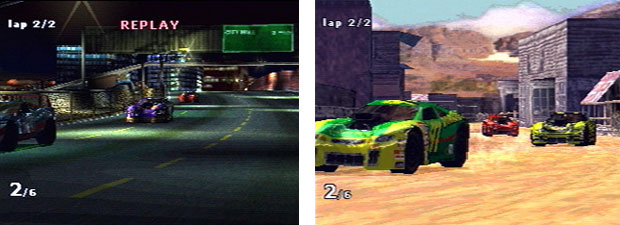
The biggest criticism to the game was how much the power ups could punish the otherwise fun experience. If you found yourself ahead the power ups would sabotage you 90% of the time. If you were behind then they would be more of a benefit to you. The thing was that the amount of power ups could be controlled. You could have it set to None, Some, More, or Mayhem. The game was tough with the More setting, and races were absolute chaos with in Mayhem mode. I found that the game was best enjoyed with Some power ups on. I don't understand why the reviewers didn't point out this little detail, rather than complain about a feature they had full control over.
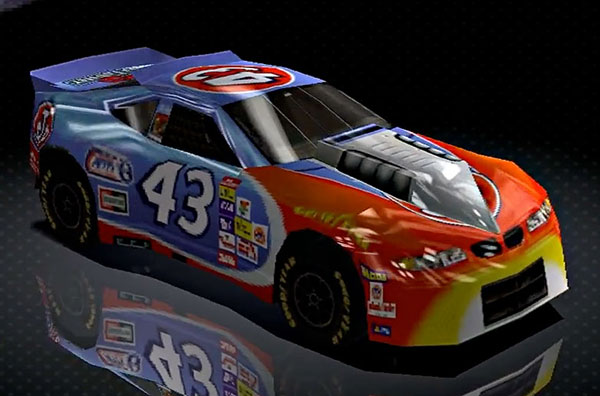
The tracks were brilliantly designed, hiding many secrets, and shortcuts. The cars themselves became the stars of the game. The default traditional looking stock car, truck, or legend ride was considered the Rookie model. Then there was a modified build known as the Pro version. It featured a larger arrow-shaped hood scoop, roof spoilers, and other aggressive features. This Pro model was a little bit faster, and handled a little bit better. It was a radical design that had never been seen in NASCAR. Unlocking the Pro cars, getting faster track times in Standard, and the computer-controlled Team modes helped extend the game play.
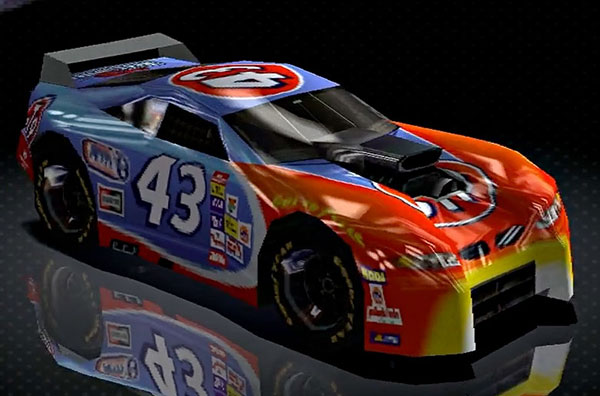
It turned out that wasn’t the peak for the car upgrades. The top of the models were known as the Elite class. Each upgrade was about 10 miles per hour faster than the previous model. Elites topped out at about 183MPH, over 200MPH with a boost power up. These were by far the hardest looking race cars in any game. They looked absolutely brutal, and to this day I have yet to find a race car in any game that comes close to capturing this level of badness. Take a look at this version of the classic 43, and tell me it wasn’t amazing. The Elite car models looked amazing from every angle. I wished that there was a physical model, or toy created of them.
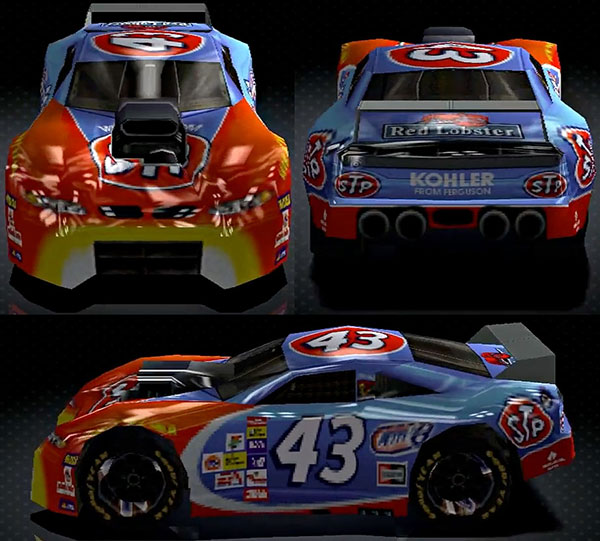
What made the game truly great was that every vehicle in the game had a Rookie, Pro, and Elite version. If you were a fan of a particular driver, or car then you would look forward to having an absolute beast version of the ride. This applied to the trucks as well. The Craftsman trucks already looked cool, but the Pro, and Elite versions were a beautiful form of violence.
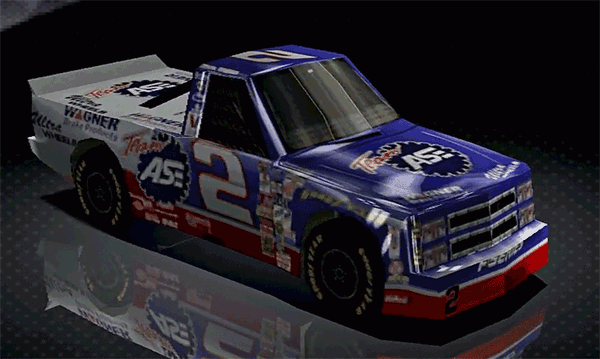
If you could win all of the races in the region then you could unlock an extra challenge. The chance to go head-to-head with icons like Alan Kulwichi, Benny Parsons, Bobby Allison, Cale Yarborough, and my hero Richard Petty. If you beat the Legend of that area then you could earn their car. The Rookie, Pro, and Elite versions of the Legend cars were just a few MPH faster than the standard cars, or trucks. You had to exploit every shortcut, and power up in order to defeat them. Racing as these, and against them added an entire dimension of replay value.
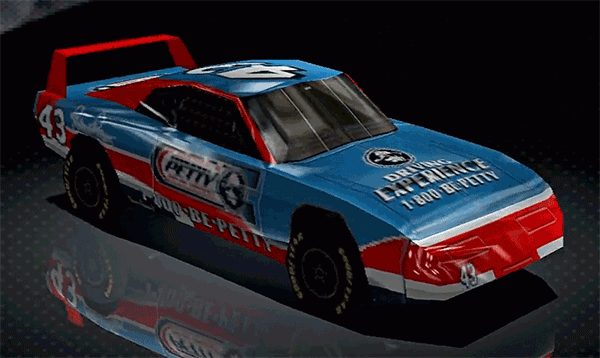
Every track also had a hidden wrench that would allow you to unlock a Bonus car. These cars ranged from serious, to funny. They reflected the culture of NASCAR fairly well. Best of all each of the bonus cars also had a Rookie, Pro, and Elite version. Their paint schemes, engines, bodies, and supporting details became more aggressive. For example the Rookie version of the Loader is a traditional construction vehicle. The Pro version has a larger engine, and racing stripes. The Elite model has a roof-mounted spoiler, and nuclear engine! There were golf carts, hot rods, RVs, and chicken delivery trucks thrown into the mix as well. They all handled differently, had their own strengths, and weaknesses.
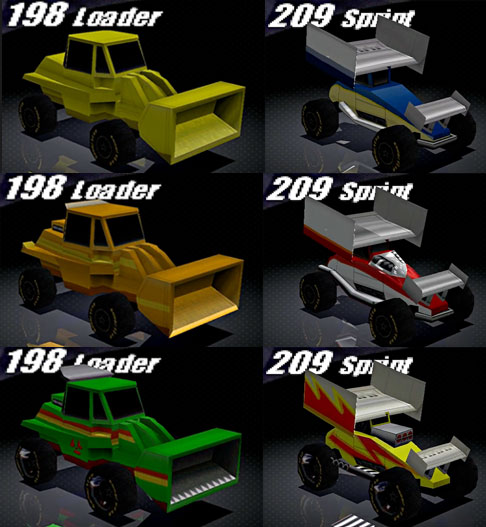
I want you to think about how many cars this meant were featured in the game. If you add up every version of the regular, and hidden cars then there were 165 vehicles in total. I understand the numbers are inflated, as the three versions of the NASCAR, Craftsman Trucks, and Legend rides were simply reskinned from the base model. It nonetheless gave the illusion that there was a tremendous amount of diversity. Granted we had seen this type of development “shortcut” previously, and it really didn’t hurt the game. Namco set the record for reskinned rides on the Playstation with 320 rides in Ridge Racer 4. Many fans, myself included, considered that to be the pinnacle of the Ridge Racer series.
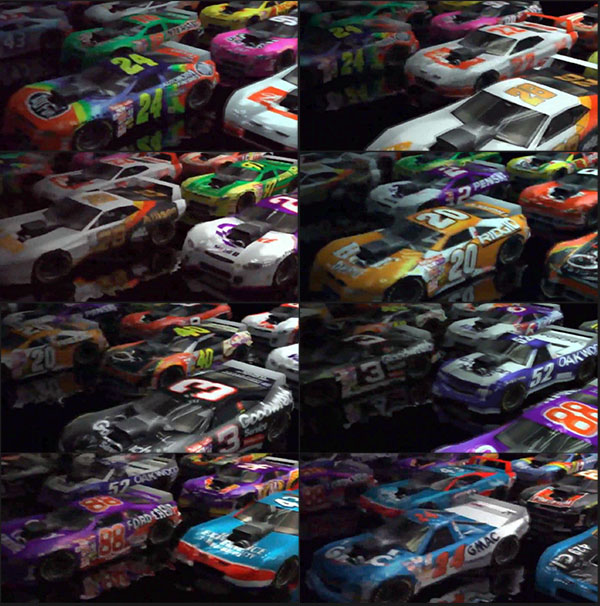
Sadly there would not be a sequel to NASCAR Rumble. At least not one featuring the license. EA, and Visceral released Rumble Racing a year later in 2001. It was a visually upgraded version for the Playstation 2, featuring the same tracks, similar music, and commentary. Aside from lacking the NASCAR rides the game added the ability to control the way the cars flipped, and rotated in the middle of a jump. It was nice feature, say for a Hot Wheels knock-off, but it lacked the magic of the earlier game. There wouldn’t be anything remotely close to Rumble for more than a decade. The one that did appear left me wanting. I’m sure many other fans enjoyed it, but wanted a little bit more. NASCAR Unleashed was Developed by Firebrand Games, and published by Activision. It came out in November 1, 2011 for the Xbox 360, Playstation 3, and Nintendo Wii.
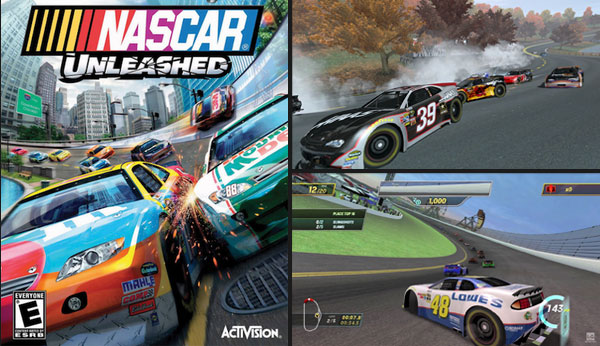
Let’s start with the best parts of the game. Visually is was brilliant. Side-by-side you could see how far the Playstation, and Playstation 3 graphics engine had come in 11 years. The car models, sponsor logos, and paint jobs were accurate for the season. The cars also showed damage during the races. These were all things virtually impossible on the original PS. Unleashed featured 15 real drivers, and 3 additional fictional drivers from the Sprint Cup series. From a game play perspective it was arcade in control, and not simulation. This made it easy to pick up, and play. It added a draft, and slingshot mechanic. This was absent in Rumble, but was a feature that had been seen in Sega’s Daytona USA going all the way back to 1994.
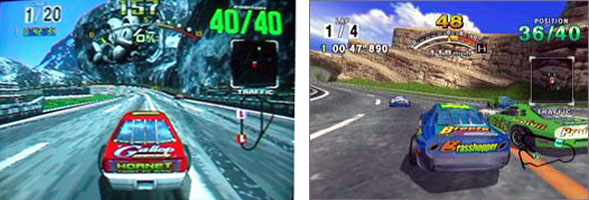
Unleashed also added the ability to create Rivals by being aggressive to, or wrecking opponents. These computer controlled cars would begin to hunt you down, and make races much more challenging. The game featured six actual locations; the Daytona International Speedway, Chicagoland Speedway, Homestead-Miami Speedway, Martinsville Speedway and Talladega Superspeedway. It also had 12 different track layouts. This meant that some of the races were set in the actual track, and other stages had the cars break through the walls of the course, and race through the streets. It was some great design, especially when you found yourself racing sideways along the face of a glass skyscraper. The game also featured 20 cars racing on the same track at once. In NASCAR Rumble the races maxed out at 6 cars. Despite all of these innovations the game itself felt lacking.
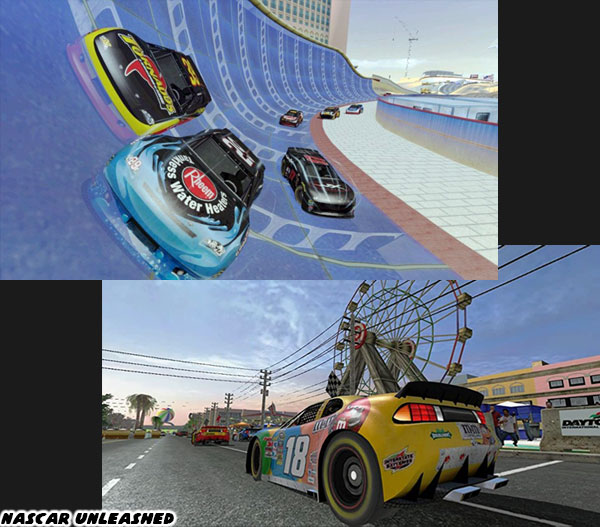
The cars were all identical. You could earn alternate paint schemes for each of the rides, and bonus silly upgrades to affix to your car. These differences didn’t have the same magic of the Pro, Elite, and Legend models of the cars in Rumble. The stages were fun, but not as memorable as the ones in Rumble either. The races lacked power-ups, secret tracks, and hidden cars. Each of these things could have added more replay value. With a little more development time, and a bigger budget I have no doubt that Firebrand Games could made a spiritual successor to Rumble. Instead it falls short of the mark. Many players said the title feels like a budget game. The ones you might see in the bins at WalMart. It wasn’t that bad, far from it, it was a decent-to-good game, but it was missing the things that could elevate it to greatness. The kindest critics said this was the perfect intro to the genre for children. I’m sure if I was a kid, and hadn’t been exposed to decades of racing games then I would have a much greater impression of it. The arcade control made it easier to explain the appeal of NASCAR more than any simulation. That much was certain. I still play NASCAR Unleashed from time-to-time because it is a good game. With that said I find myself firing up NASCAR Rumble shortly after, and end up having more fun.
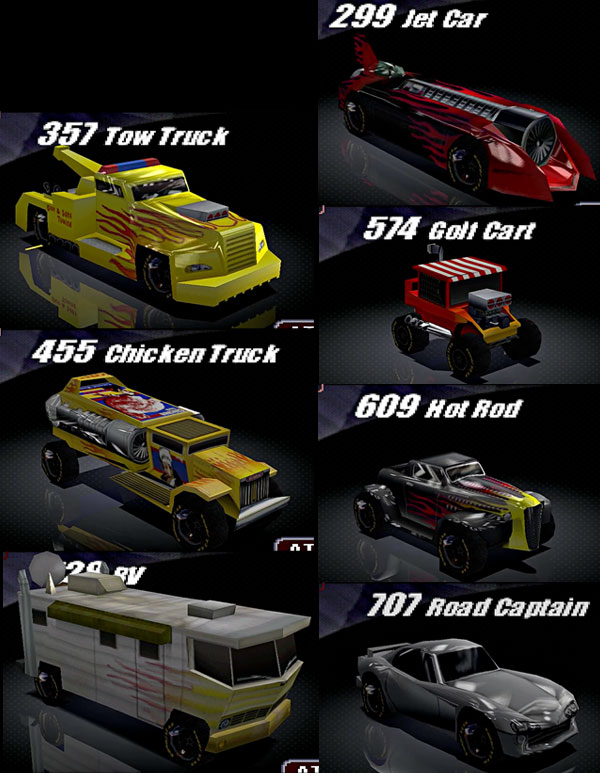
I have no doubt that the greatest NASCAR game never made would be if the best parts of Rumble, and Unleashed were merged together. I hope that there is an over-the-top NASCAR arcade game in the works. Something with a big budget, and AAA team developing it. We’re long overdue for something like that. Until then I'll always have Rumble to keep me going. Were there any games that you wished had gotten a modern sequel? Were there any okay games that you thought could have been great with a little more time, and polish? Let me know in the comments section please. As always if you would like to sponsor me
please visit my Patreon page and consider donating each month, even as little as $1 would help make better blogs and even podcasts!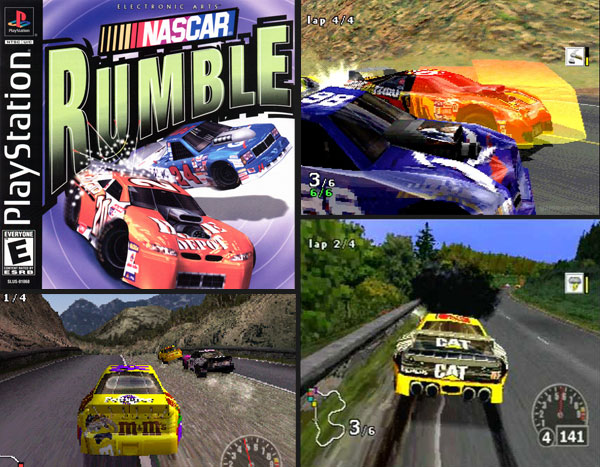
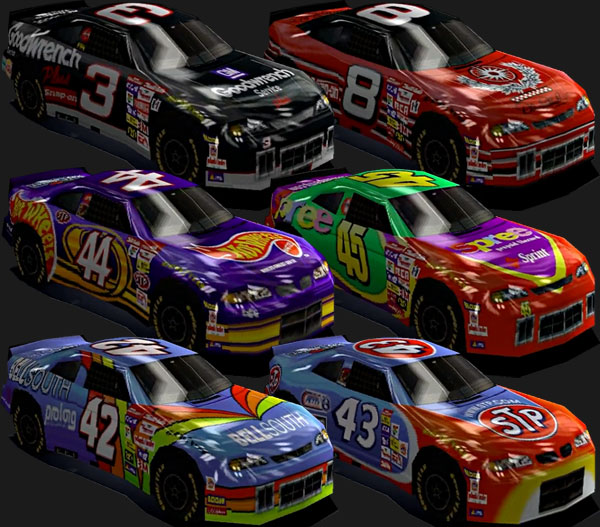
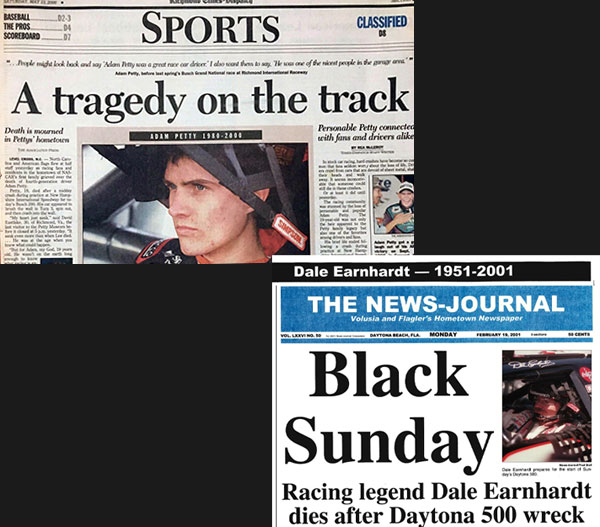
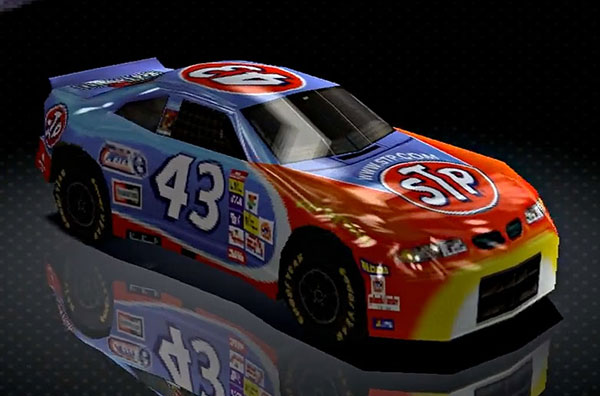




























Reviews I guess most just watch youtube videos and judge for themselves, on xbox for me most games that I already was planning to buy day 1, made me wait for it to be on sale when its released on gamepass, case in point Streets of rage 4, hot shots racing, chorus probably forgetting some sorry went on reviews when you mentioned it was not mentioned you had control over the powerups. I can't think of wishful updated upgrades for games. maybe a few do overs for some home versions - OutRunners -
ReplyDelete